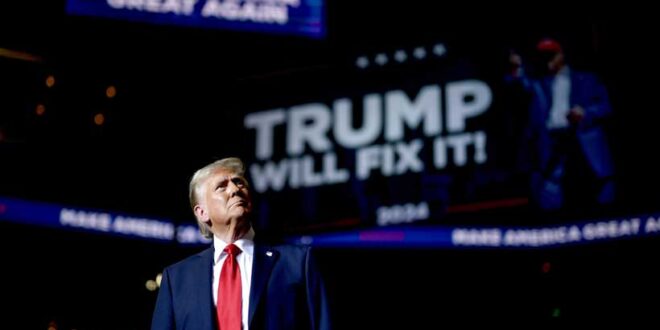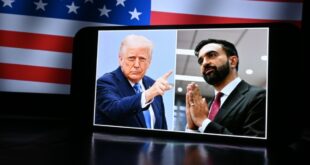The U.S. presidential election has always had significant global ramifications, shaping economies and geopolitical landscapes across the world. The president of the United States is not merely a domestic leader but a central figure in international diplomacy and economics, which is why the world watches closely. While foreign observers have no influence over the outcome, they scrutinize each candidate’s foreign policy stance to anticipate the impact on their regions, particularly on critical issues like immigration.
Donald Trump’s campaign is once again anchored in his populist “Make America Great Again” slogan and the more assertive “America First” doctrine. These ideas appeal to voters who believe American jobs, industries, and culture have been undermined by foreign competition. His hardline stance on immigration, a cornerstone of his platform, has garnered support among those who view undocumented migrants as a threat. However, Trump’s policies extend beyond illegal immigration, encompassing legal immigration programs such as the H-1B visa system—a lightning rod for controversy among his base.
The internal MAGA divide became more pronounced after Donald Trump appointed Sriram Krishnan, an Indian-born entrepreneur, as his adviser on artificial intelligence (AI). Krishnan has been a strong advocate for expanding the H-1B visa program, emphasizing that increasing access to foreign talent is crucial for ensuring that America maintains its technological and economic leadership. However, this position has drawn significant criticism from many Trump supporters, who view foreign workers as a threat to American jobs and economic opportunities. Anti-immigration activist Laura Loomer, among others, expressed her opposition by labeling Krishnan a “third-world invader,” underscoring the polarized response to his support for policies that favor foreign labor over American workers.
Central to this divide is the issue of cheap labor. Critics of the H-1B visa program argue it allows companies to hire skilled foreign workers at lower wages, undercutting American workers. They contend that tech giants, particularly in Silicon Valley, push for H-1B expansion not because of a talent shortage but to access cost-effective labor, boosting profits at the expense of domestic workers. This sentiment has resonated within Trump’s populist base, who see such practices as a betrayal of the nationalist ideals that define MAGA.
The controversy intensified as prominent figures like Elon Musk and Republican candidate Vivek Ramaswamy publicly supported the H-1B program. Musk argues that attracting global talent is vital for the U.S. to stay competitive in fields like artificial intelligence, space exploration, and renewable energy. Ramaswamy echoes this perspective, emphasizing the need for foreign expertise to sustain America’s technological leadership. They and others in the tech industry warn that without such talent, the U.S. risks falling behind nations like China and India, which are rapidly advancing their tech sectors and fostering robust domestic talent pools.
However, these arguments are met with skepticism from critics who see the push for H-1B visas as a thinly veiled strategy to reduce labor costs. They argue that the program is less about addressing a skills gap and more about exploiting foreign workers who accept lower wages. For many in Trump’s base, this represents a betrayal of the American workforce, further fueling discontent within the MAGA movement.
The economic implications of the H-1B debate extend beyond U.S. borders. An expansion of the program could have short-term benefits for the U.S. tech industry by providing highly skilled labor in high-demand fields. However, this influx of foreign workers may intensify competition for jobs, potentially suppressing wages and making it harder for American workers to secure well-paying positions. Critics contend that relying on foreign labor exacerbates economic inequalities while prioritizing corporate profits over national workforce development.
For Asian economies, particularly India, the outcome of this debate is equally significant. India has long been a major supplier of skilled labor to the U.S., with the H-1B program serving as a vital pathway for Indian professionals. Any tightening of U.S. immigration policies could lead to a reverse brain drain, with skilled workers remaining in India to support its burgeoning tech sector. This shift could bolster India’s position in the global tech ecosystem, attracting investment and fostering innovation. Similarly, other Asian countries, such as China, Singapore, and South Korea, stand to benefit from a reorientation of global talent flows, further challenging U.S. dominance in technology and innovation.
China, in particular, has been aggressively investing in its technological infrastructure and talent development. A reduction in U.S. access to global talent could accelerate China’s ascent, enabling its tech giants to attract top-tier professionals and solidify their positions as global leaders. This scenario underscores the potential for a multipolar tech ecosystem, with the U.S. facing increased competition from Asia.
Amidst this debate, a growing chorus within the U.S. calls for investing in domestic workforce development instead of expanding foreign labor programs. Critics of the H-1B system argue that the government should focus on creating accessible and affordable education programs to equip Americans with the skills needed to thrive in high-demand fields. They advocate for subsidies in STEM education and vocational training, believing this approach would reduce reliance on foreign labor while strengthening the national workforce.
Many within Trump’s base view this as the more sustainable solution, aligning with the “America First” ethos by prioritizing American workers over foreign labor. They argue that investing in education and skill-building is essential for ensuring economic resilience and maintaining technological leadership. By fostering a homegrown talent pool, the U.S. could address its labor shortages without undermining domestic wages or exacerbating economic disparities.
The appointment of Sriram Krishnan as Trump’s AI adviser has exposed deep fractures within the MAGA movement. His support for H-1B expansion is seen by many as a betrayal of the nationalist, anti-immigration values that underpin Trump’s base. This conflict highlights a broader tension between globalist and nationalist approaches to economic policy, with significant implications for the U.S. workforce and global economies.
Figures like Musk and Ramaswamy argue that embracing global talent is essential for maintaining America’s competitive edge, particularly in sectors where innovation drives economic growth. However, critics warn that this approach risks sidelining American workers and prioritizing corporate interests over national well-being. The consequences of this debate will ripple across borders, shaping the future of labor, innovation, and economic power in an increasingly interconnected world.
In the end, the debate over H-1B visas reflects a broader question about the direction of U.S. economic policy: should the nation focus on nurturing its domestic workforce or continue to rely on foreign talent to sustain its technological leadership? The answer will not only define the trajectory of America’s economy but also influence global power dynamics in the years to come. Whether through policy reforms, educational investments, or shifts in immigration strategy, the decisions made today will resonate far beyond the 2024 election, shaping the future of work and innovation on a global scale.
 Geostrategic Media Political Commentary, Analysis, Security, Defense
Geostrategic Media Political Commentary, Analysis, Security, Defense





